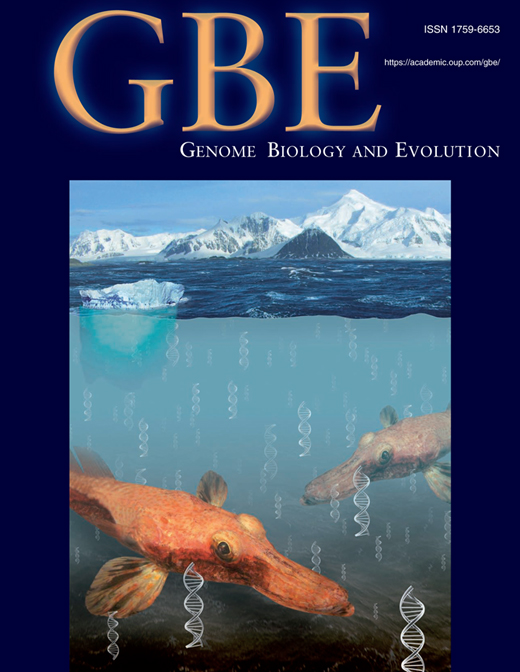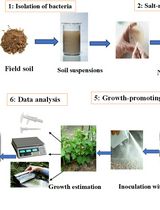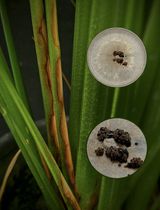- EN - English
- CN - 中文
Method for Assessing Virulence of Colletotrichum higginsianum on Arabidopsis thaliana Leaves Using Automated Lesion Area Detection and Measurement
应用损伤面积的自动化检测和测量评价炭疽菌对拟南芥叶片致病性的方法
发布: 2019年11月20日第9卷第22期 DOI: 10.21769/BioProtoc.3434 浏览次数: 6758
评审: Amey RedkarXiaofei LiangHailong Guo

相关实验方案

微生物提取物对卵菌辣椒疫霉菌和猝倒病疫霉的体外筛选
Mónica Trigal Martínez [...] María Ángeles Vinuesa Navarro
2025年09月20日 1185 阅读
Abstract
The plant pathogenic fungus, Colletotrichum higginsianum is widely used to understand infection mechanisms, as it infects the model plant Arabidopsis thaliana. To determine the virulence of C. higginsianum, several methods have been developed, such as disease reaction scoring, lesion measurement, entry rate assays, and relative fungal biomass assays using real-time quantitative PCR. Although many studies have taken advantage of these methods, they have shortcomings in terms of objectivity, time, or cost. Here, we show a lesion area detection method applying ImageJ color thresholds to images of A. thaliana leaves infected by C. higginsianum. This method can automatically detect multiple lesions in a short time without the requirement for special equipment and measures lesion areas in a standardized way. This high throughput technique will aid better understanding of plant immunity and pathogenicity and contribute to reproducibility of assays.
Keywords: Colletotrichum higginsianum (菜炭疽病)Background
Colletotrichum fungi cause anthracnose disease in a broad range of plants, including important crops, and have a serious economic impact (Cannon et al., 2012). Among Colletotrichum species, C. higginsianum infects Brassicaceae plants, including the model plant Arabidopsis thaliana (O’Connell et al., 2004). Thus, this pathogen has been used for various studies that have revealed molecular mechanisms of plant immunity and pathogenicity (Birker et al., 2009; Narusaka et al., 2009; Kleemann et al., 2012; Takahara et al., 2016; Plaumann et al., 2018). Moreover, recently released high-quality genome assemblies of C. higginsianum provide genomic resources that should increase the use of this fungus in functional studies by facilitating the identification of candidate genes of interest (Zampounis et al., 2016; Tsushima et al., 2019). In order to determine the virulence of C. higginsianum, initial studies employed disease reaction scores based on visual observation and subjective judgement (O’Connell et al., 2004; Narusaka et al., 2004). The necessity for more objective approaches has led to the development of alternative methods including lesion diameter measurement, entry rate assays, and measurement of relative fungal biomass using real-time quantitative PCR (Narusaka et al., 2010; Hiruma and Saijo, 2016). These methods are commonly employed in studies using C. higginsianum, yet they have disadvantages, such as the variability of lesion shapes leading to differences in measured values between observers, time-consuming steps, or the economic burden of purchasing reagents. ImageJ has been used as an open source tool for the analysis of scientific images (Schneider et al., 2012). In the field of plant pathology, many studies have utilized ImageJ to analyze pathogenicity or resistance, for instance by measuring lesion sizes (Dagdas et al., 2016; Kumakura et al., 2019). However, these procedures can be further automated. Therefore, we developed an objective, automated, and affordable method to detect and measure lesion areas from images of A. thaliana leaves infected by C. higginsianum using ImageJ. In this article, we describe how to perform infection assays to study the A. thaliana-C. higginsianum interaction and how to detect and measure lesions using ImageJ macros to record multiple lesion areas at one time. This method enables us to reproducibly perform infection assays with the A. thaliana-C. higginsianum pathosystem and may be adapted to other pathosystems. For example, ImageJ color thresholds were also used to measure lesion areas on C. shisoi-infected A. thaliana (Gan et al., 2019). This protocol will allow us to perform objective and high throughput analyses to gain further insights into plant-microbe interactions.
Materials and Reagents
- 50 ml conical tube (e.g., Falcon 50 ml Conical Centrifuge Tubes, Corning Inc., catalog number: 352070)
- Nylon mesh (100 μm pore size) cut into 11 x 11 cm square
- Surgical tape
- 1.5 ml microcentrifuge tube (e.g., 1.5 ml Sampling Tubes, Round Bottom, FUKAE KASEI Co., Ltd., catalog number: 131-615C)
- Petri dish
- Paper towel
- Permanent marker
- A. thaliana plants grown at 22 °C with a 10-h photoperiod for 4 weeks
Note: We recommend including genotypes known to show clear resistant and susceptible phenotypes as controls. In the case of infection assays using C. higginsianum MAFF 305635, Ws-2 and Ler-0 can be used as controls for resistance and susceptible phenotypes, respectively. - C. higginsianum strains
- Potato dextrose agar (Potato Dextrose Agar, Nissui Pharmaceutical Co., Ltd., catalog number: 05709) prepared in Petri dishes
- Sterilized water
Equipment
- Airtight transparent plastic container with a rubber seal lid
- Painting brush (autoclaved) (e.g., Nylon watercolor brush (brown hair) flat, Artec Co., Ltd., catalog number: 10629)
Note: Any painting brush can be used. We autoclave painting brushes to eliminate any contaminants from previous experiments and reuse them. - Funnels (autoclaved)
Note: We autoclave funnels for the same reason of painting brushes. - Centrifugal machine (e.g., High speed refrigerated micro centrifuge, TOMY SEIKO Co., Ltd., catalog number: MX-307)
- Incubator (dark condition, 24 °C) (e.g., Cool incubator, Mitsubishi Electric Corporation, catalog number: CN-25C)
- Growth chamber with BLB light (light/dark = 12 h/12 h, 24 °C) (e.g., Growth cabinet, SANYO Electric Co., Ltd., catalog number: MLR-350 and Blacklight blue, Hitachi, Ltd., catalog number: FL40SBLB)
- Hemacytometer (e.g., Reichert Bright-Line, Hausser Scientific Co., catalog number: 1492)
- Light microscope (e.g., Binocular Microscope, Olympus Corporation, catalog number: CX31)
- Pipette that can measure 5 μl (e.g., PIPETMAN Classic P20, Gilson Inc., catalog number: F123600)
- Spray bottle (500 ml)
- Digital camera (e.g., EOS Kiss X6i, Canon Inc., catalog number: 6557B001)
- Camera stand (e.g., Copy stand CS-A4, LPL Co., Ltd., catalog number: L18142)
- Scissors
- Forceps
- White plastic tray
- Scale
Software
1.ImageJ v1.52p (Rasband, W.S., ImageJ, U. S. National Institutes of Health, Bethesda, Maryland, USA, https://imagej.nih.gov/ij/, 1997-2018)
Procedure
文章信息
版权信息
© 2019 The Authors; exclusive licensee Bio-protocol LLC.
如何引用
Tsushima, A., Gan, P. and Shirasu, K. (2019). Method for Assessing Virulence of Colletotrichum higginsianum on Arabidopsis thaliana Leaves Using Automated Lesion Area Detection and Measurement. Bio-protocol 9(22): e3434. DOI: 10.21769/BioProtoc.3434.
分类
植物科学 > 植物免疫 > 宿主-细菌相互作用
微生物学 > 微生物-宿主相互作用 > 真菌
您对这篇实验方法有问题吗?
在此处发布您的问题,我们将邀请本文作者来回答。同时,我们会将您的问题发布到Bio-protocol Exchange,以便寻求社区成员的帮助。
Share
Bluesky
X
Copy link













